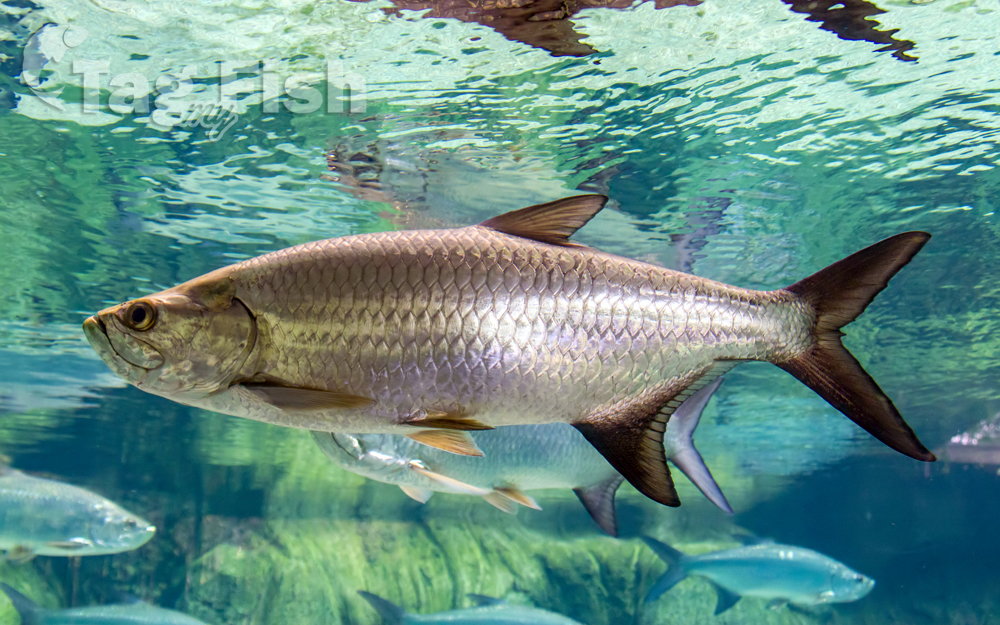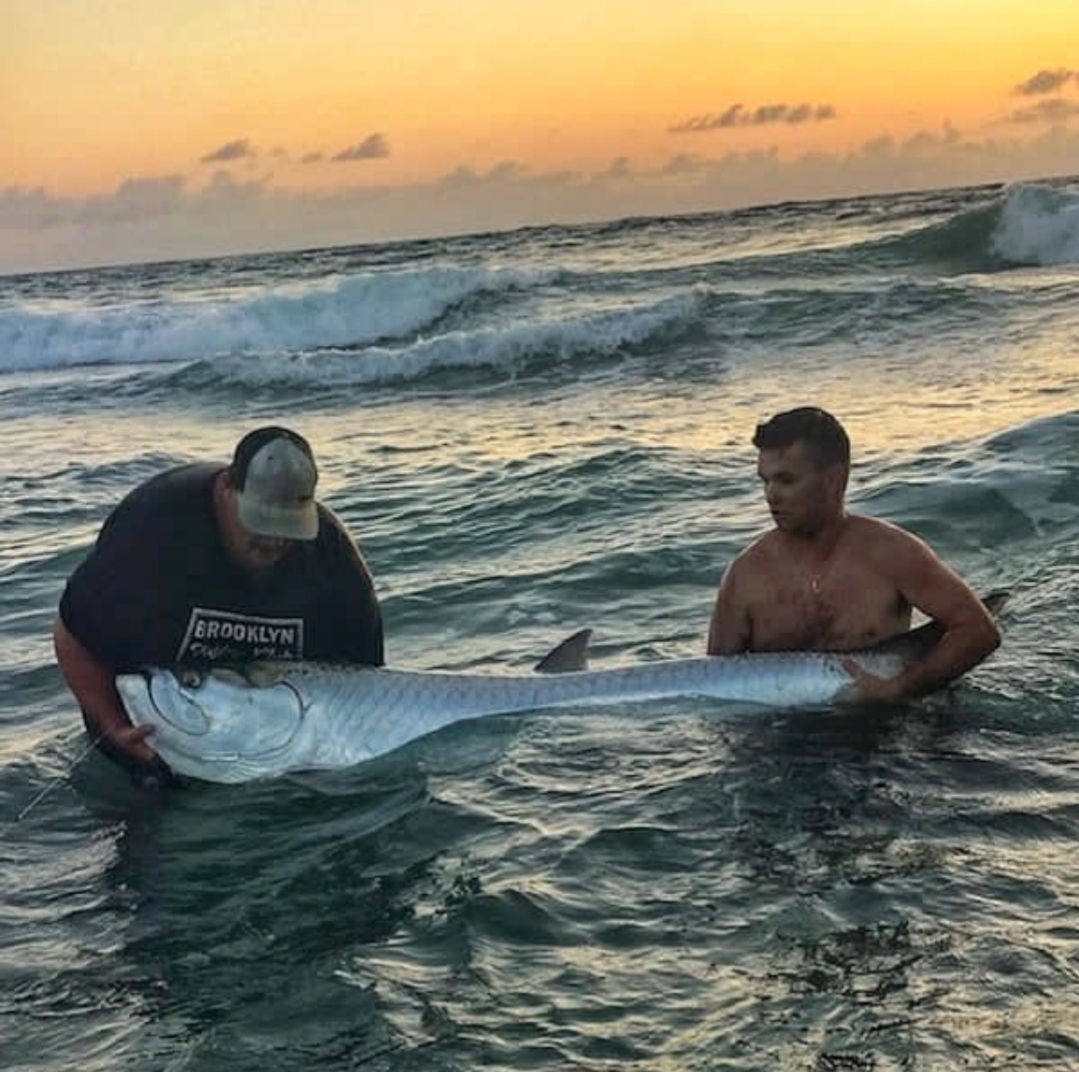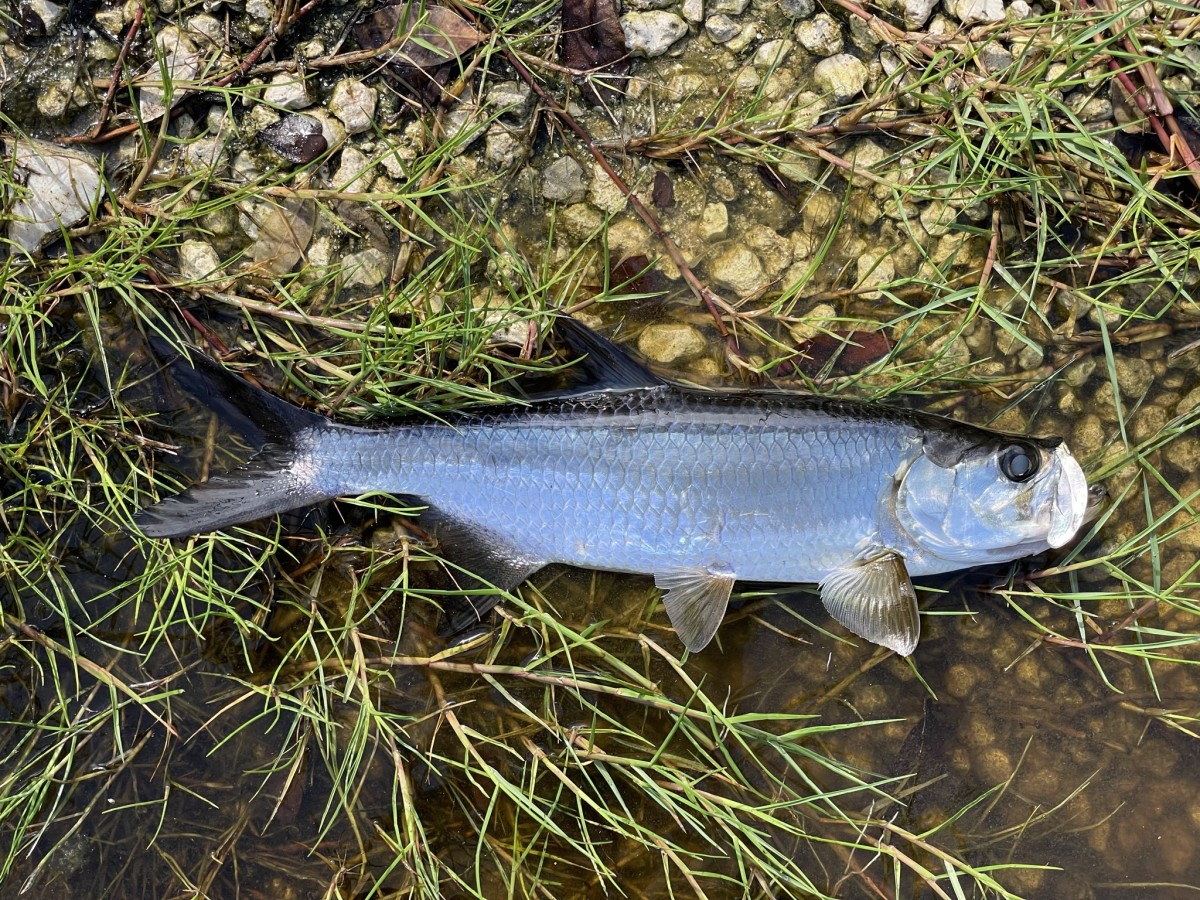Atlantic tarpon
(Megalops atlanticus)

Classification
General data
The Atlantic tarpon (Megalops atlanticus) is a ray-finned fish that inhabits coastal waters, estuaries, lagoons, and rivers. It is also known as the silver king. It is found in the Atlantic Ocean, typically in tropical and subtropical regions, though it has been reported as far north as Nova Scotia and the Atlantic coast of southern France, and as far south as Argentina. As with all Elopiformes, it spawns at sea. Its diet includes small fish and crustaceans.
The tarpon has a reputation for great aerobatics, attaining astonishing size, and having impressive armored scales. It is poorly received as food, but valued as a game fish.
Atlantic tarpon evolved approximately 18 million years ago and is one of the oldest living fish.
It has been recorded at up to 2.5 m (8 ft 2 in) in length and weighing up to 161 kg (355 lb). Males rarely weigh more than 100 pounds.
A tarpon is capable of filling its swim bladder with air, like a primitive lung. This gives it a predatory advantage when oxygen levels in the water are low. In appearance, it is greenish or bluish on top and silver on the sides. The large mouth is turned upwards and the lower jaw contains an elongated, bony plate. The last ray of the dorsal fin is much longer than the others, reaching nearly to the tail.













